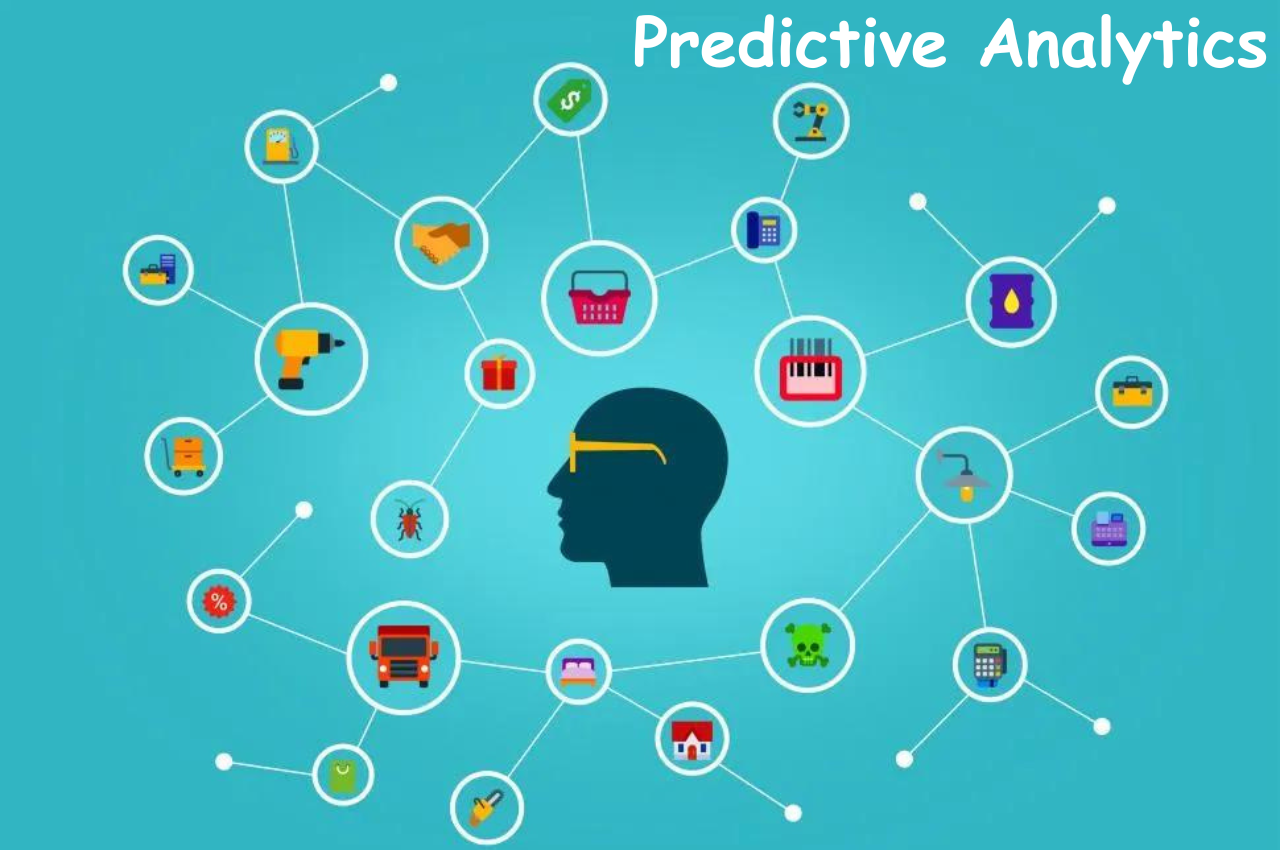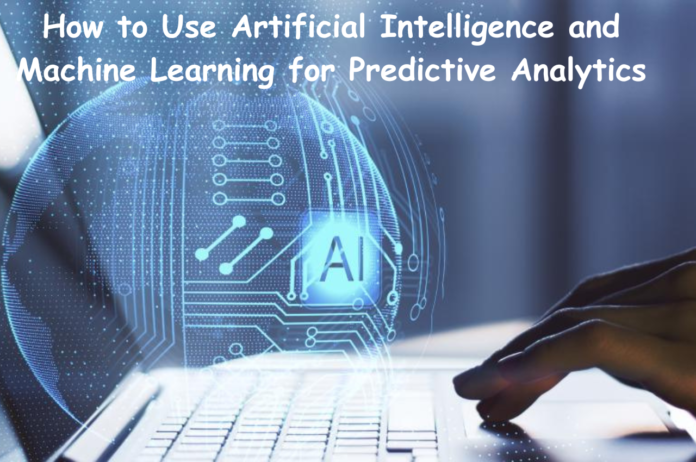Predictive analytics using artificial intelligence and machine learning involves two steps: building a model and refining it. This cycle is repeated several times until acceptance is obtained and then deployment is made. In this article, we will explore how to use artificial intelligence and machine learning for predictive analytics. Let’s start moving-
Thank you for reading this post, don't forget to subscribe!What is predictive analytics?
Predictive analytics is an advanced form of data analytics that attempts to answer the question, “What might happen next?” It is a branch of advanced analytics that utilizes data, statistical algorithms, and machine learning techniques to make predictions about future events or outcomes. Predictive analytics is used across various industries and applications, including finance, marketing, healthcare, manufacturing, and retail, to forecast customer behavior, optimize business processes, mitigate risks, and enhance decision-making.
How does predictive analytics work?
Here’s a simplified explanation of how predictive analytics works-
- Data Collection: The first step in predictive analytics is collecting relevant data. This data could come from various sources such as databases, spreadsheets, sensors, social media, etc. The data collected typically includes both the predictor variables (features) and the outcome variable (the variable you want to predict).
- Data Cleaning and Preprocessing: Once the data is collected, it needs to be cleaned and preprocessed. This involves handling missing values, removing duplicates, transforming variables, and scaling data to ensure that it’s suitable for analysis.
- Feature Selection and Engineering: In this step, you identify which features are most relevant for making predictions and may also create new features that could improve the predictive accuracy of the model.
- Model Selection: Next, you choose the appropriate predictive model based on the nature of your data and the problem you’re trying to solve. Common predictive models include linear regression, decision trees, random forests, support vector machines, neural networks, etc.
- Training the Model: Once the model is selected, it needs to be trained on the historical data. During the training process, the model learns the patterns and relationships within the data so that it can make accurate predictions.
- Model Evaluation: After the model is trained, it needs to be evaluated to assess its performance. This is typically done using metrics such as accuracy, precision, recall, F1-score, etc. The model may be adjusted and retrained if necessary to improve its performance.
- Making Predictions: Once the model is trained and evaluated, it can be used to make predictions on new, unseen data. The model takes the input features of the new data and produces predictions about the outcome variable.
- Deployment and Monitoring: Finally, the predictive model is deployed into production where it can be used to make real-time predictions. It’s important to monitor the model’s performance over time and update it as necessary to ensure that it continues to make accurate predictions as new data becomes available.
How to Use Artificial Intelligence and Machine Learning for Predictive Analytics
Artificial intelligence (AI) and machine learning (ML) are revolutionizing predictive analytics across various sectors by enabling businesses and organizations to extract valuable insights from vast amounts of data. Here’s How to Use Artificial Intelligence and Machine Learning for Predictive Analytics-
Finance and Banking
AI and ML algorithms analyze transaction data to detect patterns indicative of fraudulent activities. ML models assess creditworthiness by analyzing historical data to predict the likelihood of default. They analyze market data to make real-time trading decisions, optimizing investment strategies.
Healthcare
ML models analyze patient data to predict disease onset, progression, and outcomes, aiding in early intervention and treatment planning. AI algorithms analyze genetic and clinical data to recommend tailored treatment plans based on individual patient characteristics. ML algorithms assist in interpreting medical images such as MRIs and X-rays, aiding in diagnosis and treatment planning.
Retail and E-commerce
Predictive analytics backed up with artificial intelligence and machine learning algorithms can help retailers understand customer behavior and preferences. Based on browsing patterns and click-through rates of specific products, e-commerce companies can effectively recommend products and offer maximum sales.
Read More: Top 20 Artificial Intelligence Applications in 2024
Personalized recommendations and reminders can help retailers retain their customers thereby building a loyal customer base. Artificial intelligence and machine learning predictive analytics also make it easier to manage supply chain processes. By using predictive algorithms, retailers can better manage inventory, avoid out-of-stock situations, and optimize logistics and warehousing, thereby increasing their profitability.
Marketing and Advertising
ML algorithms segment customers based on demographics, behavior, and preferences to tailor marketing campaigns. AI models forecast the expected revenue from individual customers over their lifetime, guiding marketing investment decisions. ML algorithms analyze customer behavior to predict the likelihood of churn, enabling proactive retention strategies.
Manufacturing
AI and ML models analyze equipment sensor data to predict when machinery is likely to fail, allowing for proactive maintenance and minimizing downtime. ML algorithms analyze production data to detect defects and anomalies in real-time, ensuring product quality.
 AI-driven predictive analytics optimize inventory levels, transportation routes, and production schedules to reduce costs and improve efficiency.
AI-driven predictive analytics optimize inventory levels, transportation routes, and production schedules to reduce costs and improve efficiency.
Transportation and Logistics
AI algorithms analyze traffic patterns, weather conditions, and historical data to optimize transportation routes and schedules. ML models analyze sensor data from vehicles to predict maintenance needs and prevent breakdowns. AI-driven predictive analytics anticipate demand for transportation services, enabling companies to allocate resources efficiently.
Customer service
Almost every application of predictive analytics using artificial intelligence and machine learning has the primary goal of providing superior customer service. We can do customer segmentation very easily with the insights provided by predictive analytics. Segmenting customers based on their responses and buying patterns by leveraging artificial intelligence helps tailor marketing strategies and drive business forward according to each segment’s characteristics.
Artificial intelligence and machine learning-based predictive analytics help businesses identify customers who express dissatisfaction with your service. Such insights empower businesses to design packages and content that suit customer needs, thus helping retain old customers and attract new ones.
Final Thoughts
Organizations and technology companies are employing artificial intelligence and machine learning-based predictive analytics to gain an edge over the rest of the market. Artificial intelligence and machine learning advances such as neural networks and deep learning algorithms can discover hidden patterns in unstructured data sets and uncover new information. But building a comprehensive data analytics and predictive analytics strategy requires big data and advanced IT systems. At Technocommy, we have extensively discussed how to use artificial intelligence and machine learning for predictive analytics. So to keep yourself updated in the age of information technology, thanks for staying with us.


